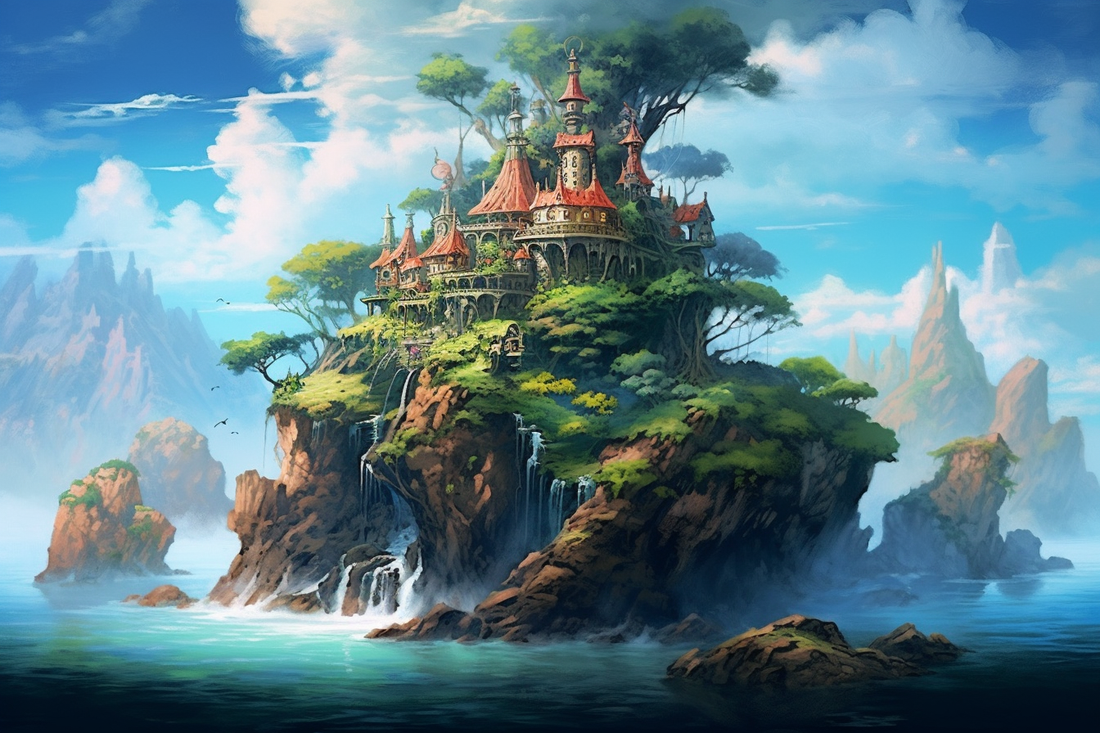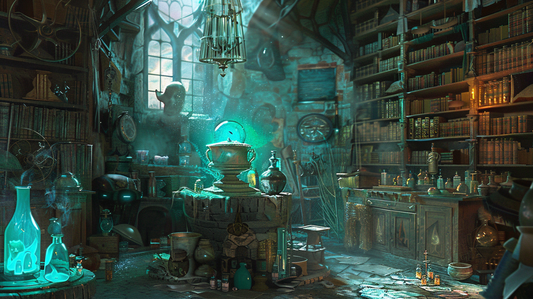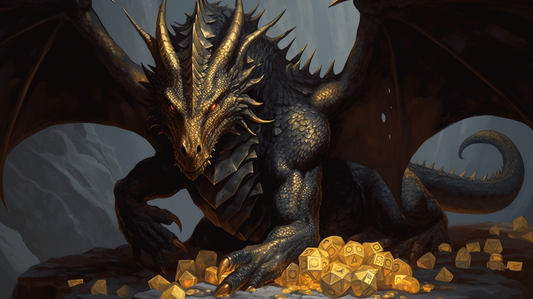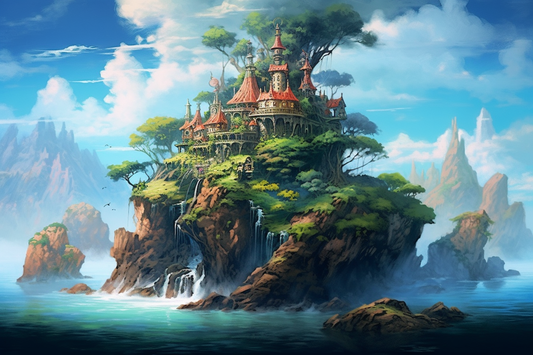
How to Create a DnD One Shot Adventure
Quinn JohnsonShare
Dungeons & Dragons (DnD) is a beloved tabletop roleplaying game that allows players to immerse themselves in epic adventures. While longer campaigns can span weeks or even months, one shot adventures offer a condensed and self-contained experience that can be completed in a single gaming session. Creating a one shot requires careful planning, creative storytelling, and consideration for player engagement. In this comprehensive “how to create a DnD one shot adventure” guide, we will explore the step-by-step process of crafting an exciting and memorable one-shot modules that will leave your players wanting more.
- How to plan a DnD one shot
- How to run a DnD one shot
- Where to find DnD one shots
- Best DnD one shots for new players
How to plan a DnD one shot

Planning a one shot adventure requires careful consideration and creative thinking. This condensed form of gameplay provides a self-contained experience that can captivate both new and experienced players. In this three-step guide, we will explore the essential elements of planning a one shot, ensuring an engaging and memorable gaming session.
Step 1: Define the Setting and Objective
The first step in planning a one shot is to define the objective and setting. Consider the following:
Decide on the main objective or goal of the adventure. Will the players need to retrieve a lost artifact, defeat a powerful villain, solve a mystery, or survive a treacherous journey? The objective will guide the plot and provide a clear focus for the players. It is especially important to give the players their objective right from the start considering the limited time frame they’ll have to complete it. We recommend writing out descriptive text that places the players directly into the game and gives them immediate purpose.
Select a compelling setting that aligns with the objective and enhances the overall experience. Will the adventure take place in a dark and foreboding dungeon, a sprawling city filled with intrigue, a dense and mysterious forest, or a distant and magical realm? The setting should evoke a sense of wonder and excitement while complementing the chosen objective. While your players are rolling their sharp edge dice in the real world, their minds should be happily engrossed in your imaginary world!
Step 2: Include a Variety of Locations
To keep the players immersed and engaged, it’s important to include a variety of locations to explore and breathe life into the adventure.
If the entirety of the one shot adventure takes place in a countryside village, it’s easy to think that you only have one location to work with; however, locations don’t always have to be whole settings, they can include micro-scenes within a greater environment. For example, this could include the local pub, the governor’s manor, a hidden system of tunnels beneath the city, and more. So considering this definition of a location, we recommend trying to provide two to three locations per one-shot.
Step 3: Craft Engaging Challenges and Encounters
The heart of any DnD adventure lies in its challenges and encounters. There aren’t many players who don’t enjoy solving a good logical puzzle or outsmarting an NPC. Here are a few ideas to create captivating gameplay:
Create one or two challenges that will test the players' abilities and skills. Consider a mix of non-combat encounters, puzzles, social interactions, and skill-based tests to cater to different playstyles. Challenges should be progressively more difficult, offering a sense of progression and accomplishment, but be sure to keep an eye on the time.
Craft memorable combat encounters within the adventure. We recommend including one smaller encounter toward the beginning or middle, then end with a larger, climactic one featuring the BBEG or antagonist of the story. Combat takes time in DnD so plan on a minimum of thirty minutes per encounter and trim them down if they are exceeding ninety minutes or the party members are losing interest. Ensure a balanced level of difficulty for your encounters. Strive for challenging gameplay that pushes the players' limits without overwhelming them. To accomplish that we like to use the combat encounter calculator.
By following this three-step guide, you can effectively plan a DnD one shot adventure that will captivate your players from beginning to end. Remember to define the objective and setting, include a few locations to explore, and craft engaging challenges and encounters. Embrace your creativity and adaptability as a Dungeon Master, and most importantly, have fun bringing your one-shot adventure to life.
How to run a DnD one shot

Running a three-hour adventure can be an immersive and fulfilling experience because it is all packed into one session. But this also creates a lot of pressure on the Dungeon Master to manage their time effectively through its duration. Here are a few tips to consider:
Plan ahead. Before the session begins, invest some time in planning and preparation. Familiarize yourself with the adventure's storyline, objectives, and key encounters. Create a session plan that outlines key scenes and estimated time for each segment of the story to keep the plot moving forward. Being as prepared as possible will give the DM more confidence when running the campaign and ensure a smoother gameplay experience for the party members.
Involve the players. To make the one-shot adventure captivating, encourage player interaction and role-playing. Some DnD groups naturally take to the art of roleplaying while others may need a little push to get them started. For the latter, we recommend giving the group more information about what is happening around them to help spark their interest. Sometimes introducing an item that promotes roleplaying like a robe with itch-inducing fleas or the boots of river dancing can be used as well. Prompt players to actively engage with non-player characters (NPCs) and make decisions based on those interactions.
Keep track of time. If this hasn’t been mentioned enough then we’ll bring it up one more time–manage your time wisely. It’s the responsibility of the DM to keep an eye on the time and pace the adventure accordingly. One shots are naturally more linear than the typical DnD campaign which should help with knowing how far along you are throughout the adventure and how much time you’ll need to complete it. If the players are struggling to keep the main quest progressing forward, the DM may need to skim through less important scenes or scenarios to leave time for more important ones.
Where to find DnD one shots

When it comes to finding one-shots, there are several reliable sources that can provide you with an abundance of exciting adventures, including: the official Dungeons and Dragons website, online communities and forums, or right here at Rune Foundry.
The Wizards of the Coast have released various books with a compilation of mini adventures if you have the gold pieces to pay them for it. On the other hand, you can find a lot of resources on social media or forums such as Reddit or Patreon where creators have written out a lot of interesting dnd one shot ideas. Lastly, if you’re looking for free one shots for download, you can check out some of the following adventures we’ve written that are simple, straight forward, and ready to play:
- Tremor in the Yawning Canyons (average party level 4)
- Druids of the Carnivorous Jungle (average party level 2, comes with premade characters)
What is the best one shot for new players?

The best DnD one shots for new players typically have three things in common: shorter in length, easy storyline to grasp, and low-level dnd players. When a one shot adventure has a lot of pages to read through, it’s hard to retain all that information and you will find yourself referencing the material more frequently. By having a shorter, more concise storyline, it’ll free up space in your mind for all the newly learned game mechanics and rules; plus, it’ll be a more enjoyable experience for you and the players overall.
Having lower-level players also is key to running the best one shots. We recommend starting the players at levels 1-4 for new DM’s. Any level above 4 starts to become a little more complicated with feats and spells and may slow down the game with questions, additional moves, or the need to clarify specifics about their dnd characters. All of our free dnd one shot pdfs are designed with new DM’s in mind so take full advantage of those free resources.
Final Thoughts
Running a DnD one shot adventure requires careful planning, engaging the players, and being an effective DM. By investing time in preparation, encouraging player interaction, and maintaining an immersive atmosphere, you can create a memorable gaming experience. Embrace your role as a storyteller and facilitator, and adapt to the choices and actions of your players. With practice and experience, you'll become adept at running captivating one shot adventures that leave players eagerly awaiting their next DnD session.



